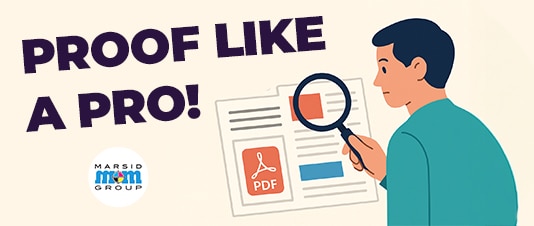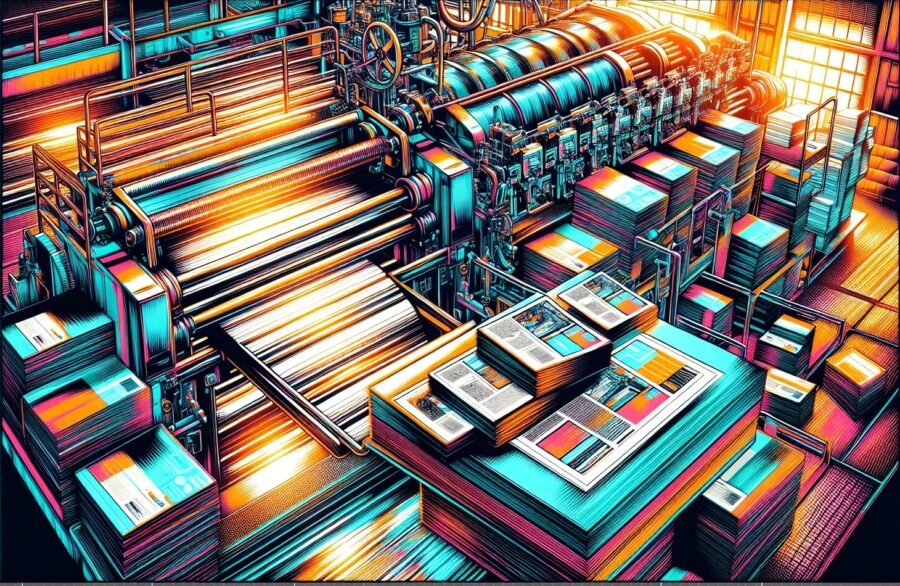
The Final Look: Why Thoroughly Reviewing Your Print Proof Could Save Your Business Thousands
Picture this: You’ve just received 5,000 beautifully printed brochures for your company’s biggest product launch of the year. The paper quality is perfect, the colors are vibrant, and everything looks professional—except for one glaring problem. Your company’s phone number is wrong. Every single copy displays the incorrect digits, and your event is tomorrow.
This nightmare scenario happens more often than you’d think, and it’s entirely preventable. The key lies in one critical step that many businesses rush through: thoroughly reviewing their print proof before giving final approval.
Understanding the Point of No Return
When you approve a print proof, you’re essentially signing off on a contract. This approval serves as your final green light, signaling to the print shop that everything is perfect and production should begin immediately. Once those printing presses start rolling, there’s no going back without significant consequences.
Think of proof approval as crossing the Rubicon of the printing world. After you give that thumbs up, your job enters the production queue, materials are allocated, and the printing process begins. Any changes you want to make at this point will require stopping production, potentially scrapping already-printed materials, and starting over—all of which translates to additional costs and delayed delivery times that could derail your marketing timeline.
This is why print professionals emphasize that proof approval is your last chance to make changes at no extra cost. Most reputable printing companies will clearly communicate this policy, but the responsibility ultimately falls on you to ensure everything is absolutely perfect before hitting “approve.”

Common Issues That Lead to Costly Reprints
Even the smallest oversight can turn into an expensive mistake when multiplied across hundreds or thousands of printed pieces. Here are the most common issues that slip through the cracks during proof review:
Typos and Text Errors: These are the silent killers of print projects. A single misspelled word, incorrect date, or wrong phone number can render an entire print run useless. What makes this particularly frustrating is that text errors are completely avoidable with careful review, yet they’re among the most frequent reasons for reprints.
Layout and Design Problems: Missing elements, incorrect sizing, or poorly aligned text can make your materials look unprofessional. Sometimes what looks fine on screen doesn’t translate well to print, especially when dealing with different paper sizes or orientations.
Bleed and Margin Issues: If your design extends to the edge of the paper, it needs what’s called a “bleed”—extra image area beyond the final trim size. Without proper bleeds, you might end up with unwanted white borders or, worse, important elements getting cut off during the trimming process.
Page Order and Count Errors: For multi-page documents like booklets or catalogs, verifying that pages are in the correct order and that you have the right total count is crucial. Nothing’s more embarrassing than a product catalog with pages out of sequence or missing entirely.
To catch these issues, take time to read through every single word of your proof. Don’t rely on spell-check alone—it won’t catch correctly spelled words used in the wrong context (like “form” instead of “from”). Have multiple people review the proof if possible, as fresh eyes often spot what you’ve become blind to after staring at the design for hours.
Understanding Color Expectations in PDF Proofs
One of the biggest misconceptions in commercial printing is expecting your PDF proof to show exactly how colors will appear on the final printed piece. This simply isn’t possible, and understanding why can save you from unrealistic expectations and disappointment.
PDF proofs are layout proofs, not color-accurate representations. Every monitor displays colors differently based on its calibration, age, brightness settings, and technology type. What looks vibrant and perfect on your screen might appear completely different on your colleague’s monitor or your client’s laptop.
Moreover, there’s a fundamental difference between how screens and printed materials display color. Your monitor uses RGB (red, green, blue) light to create colors, while printing uses CMYK (cyan, magenta, yellow, black) inks or toners. Some colors that are vibrant on screen simply can’t be reproduced exactly in print due to these different color systems.
This is why PDF proofs should be used primarily to check layout, text accuracy, image placement, and overall design elements—not to judge final color output. If color accuracy is critical for your project, discuss color-matching options with your printer, such as Pantone color specifications or requesting a hard proof on the actual paper stock.
Viewing Your Proof Properly: Setup for Success
The environment and method you use to review your proof can significantly impact your ability to catch errors. Many people make the mistake of quickly scrolling through their proof on a smartphone during their commute or glancing at it on a tablet while multitasking. This approach virtually guarantees that important details will be missed.
Instead, set aside dedicated time to review your proof properly. Use a full-sized computer monitor—ideally the largest screen available to you. This allows you to see fine details clearly and gives you a better sense of how text and images will appear on the printed piece.
Find a quiet environment where you can focus without distractions. Print proofing isn’t a task to squeeze in between meetings or while answering emails. Treat it with the same attention you’d give to reviewing an important contract, because in many ways, that’s exactly what you’re doing.
Take your time with the review process. Rush jobs often lead to rush reviews, which lead to expensive mistakes. If your printer is pressuring you to approve quickly, remember that it’s better to take an extra day to review thoroughly than to spend weeks and additional budget fixing problems later.
Your Essential Proof Review Checklist
Before clicking that final “approve” button, work through this comprehensive checklist to ensure you haven’t missed anything critical:
🔍 Zoom In and Examine:
- Zoom in to at least 100% to check small text and fine details
- Verify that all text is crisp and readable, especially phone numbers, email addresses, and website URLs
- Ensure all images are sharp and high-quality, not pixelated or blurry
📝 Content Verification:
- Read every single word out loud—this helps catch errors your eyes might skip over
- Double-check all dates, times, addresses, and contact information
- Verify that all intended text and images are present and nothing is missing
- Confirm that any variable information (names, addresses, etc.) is correct
📄 Layout and Structure:
- Check page count and verify pages are in the correct order
- Ensure all design elements are properly aligned and positioned
- Confirm that important elements aren’t too close to trim edges
- Verify that bleeds extend properly beyond trim marks if applicable
🎨 Visual Elements:
- Confirm all logos are the correct version and properly placed
- Check that all images are positioned correctly and haven’t shifted
- Verify that any charts, graphs, or tables display information accurately
The Bottom Line: Your Proof Review Investment Pays Off
Taking the time to thoroughly review your print proof isn’t just about avoiding mistakes—it’s about protecting your investment and your professional reputation. A well-executed print piece reflects positively on your business, while errors can undermine credibility and waste valuable marketing dollars.
Remember, your printing partner wants your project to succeed just as much as you do, but they’re relying on your expertise about your business and your careful review to ensure accuracy. They can produce beautiful, high-quality printing, but they can’t know that you meant “March 15th” instead of “March 25th” or that your logo should be the updated version, not last year’s design.
Make proof review a priority in your printing timeline. Build in adequate time for thorough review, involve multiple stakeholders when appropriate, and never rush this critical step. Your future self—and your budget—will thank you for the diligence.
The next time you receive a proof for review, remember: this is your moment of truth. Take it seriously, and your printed materials will represent your business exactly as you intended.
Quick Links
✅ File Uploads: Send your print-ready artwork anytime at upload.mmprint.com
✅ Questions? Call us at 516-334-1603 or email info@mmprint.com
✅ Need to re-order? No Hassle re-orders


Leave a Reply